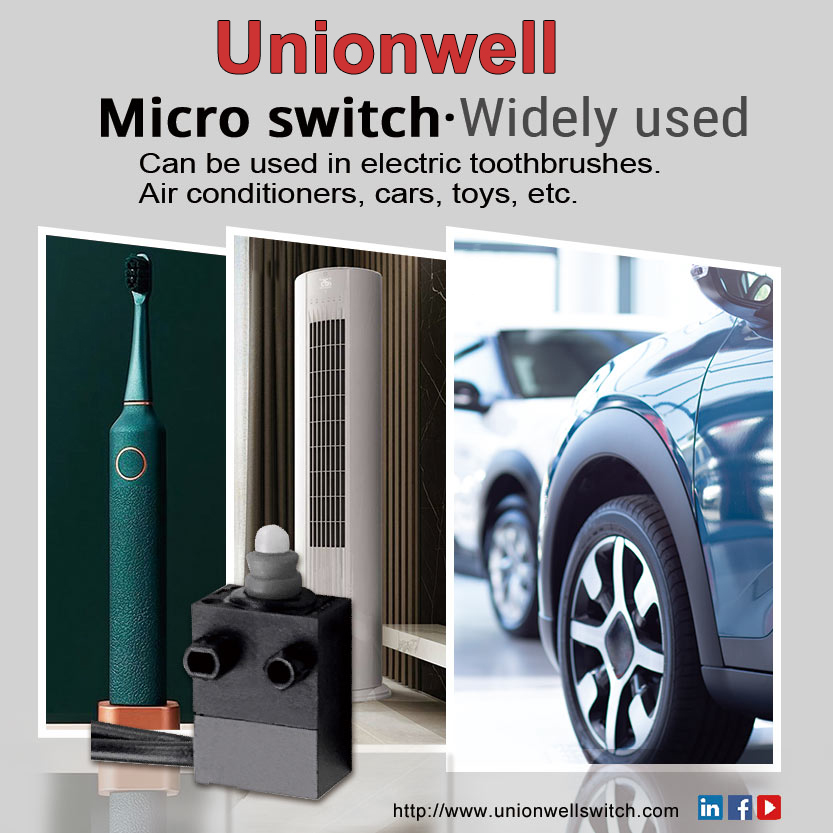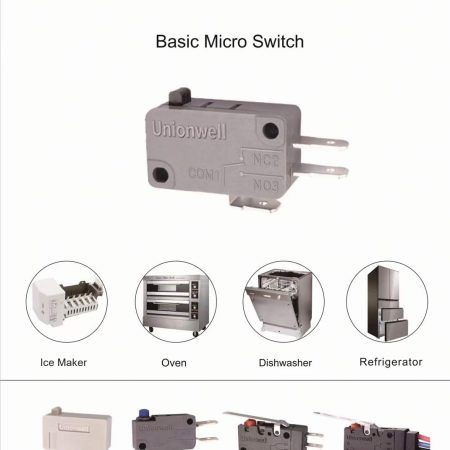What Is A Push Button Micro Switches

A push-button micro switch is a small switch with a tiny contact gap and a snap-action mechanism. A contact structure switches for a specified movement and force enclosed in a case with an actuator provided on the case’s exterior. The following Switch structure is shown as an example. Push-button micro switches are mainly comprised of five components.
General Terms Push Button Micro Switches:
A small-size switch with a tiny contact gap and snap-action mechanism and a contact structure that switches by a specified movement and specified force is enclosed in a case with an actuator provided on the case’s exterior.
Switch With Contacts:
A type of switch that achieves the switching function through the mechanical switching of contacts. Use as opposed to a semiconductor switch with switch characteristics. Contact Form: The structure of the electrical I/O circuits of contacts used according to the type of application.
Ratings:
Value is generally used to ensure the characteristics and performance of switches, such as the rated current and rated voltage. Ratings are given assuming specific conditions (such as the type of load, current, voltage, and frequency).
Resin Filled (Molded Terminal):
A terminal is filled with resin after being connected to the internal circuit of the switch with a lead to eliminate exposed current-carrying metal parts and thereby enhance the drip-proof properties of the switch.
Insulation Resistance:
The resistance between discontinuous terminals, between terminals and non-current-carrying metal parts, and between terminals and ground.
Dielectric Strength:
The threshold value up to which insulation will not be destroyed when a high voltage is applied for 1 minute to a predetermined measurement location.
Contact Sesistance:
The electrical resistance of the contact point of contact. Generally, the contact resistance includes the conductive resistance of the spring or terminal section.
Vibration Resistance Malfunction:
The range of vibration for which closed contacts will not open for longer than a specific time when vibration is applied to a switch currently in operation. Terms for Configuration and Structure Switch Configuration and Structure. Contact Gap The contact gap is either 0.25, 0.5, 1.0, or 1.8 mm. The contact gap is a design goal. The standard contact gap is 0.5 mm.
Even for the same switch configuration, the smaller the contact gap of a switch mechanism, the less the movement differential (MD) is, and the more sensitivity and durability the switch has. However, such a switch cannot ensure excellent switching performance, vibration resistance, or shock resistance. A switch becomes less sensitive when the movement differential (MD) increases along with the contact gap due to the wear and tear of the contacts due to current switching operations.
Unionwell G3 Series Subminiature Sealed Micro Switch Products List >>
Suppose a switch with a contact gap of 0.25 mm is used for its high sensitivity. In that case, it will be necessary to minimize the switching current to prevent the wear and tear of the contacts due to current switching operations. A switch with a wide contact gap excels in vibration resistance, shock resistance, and switching performance.






